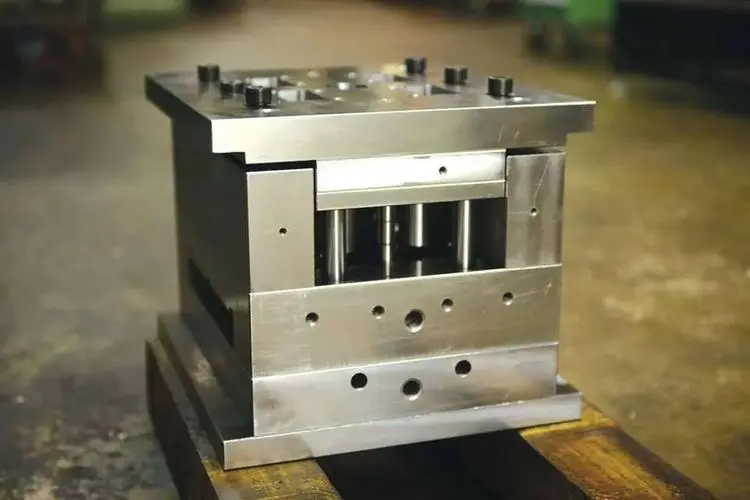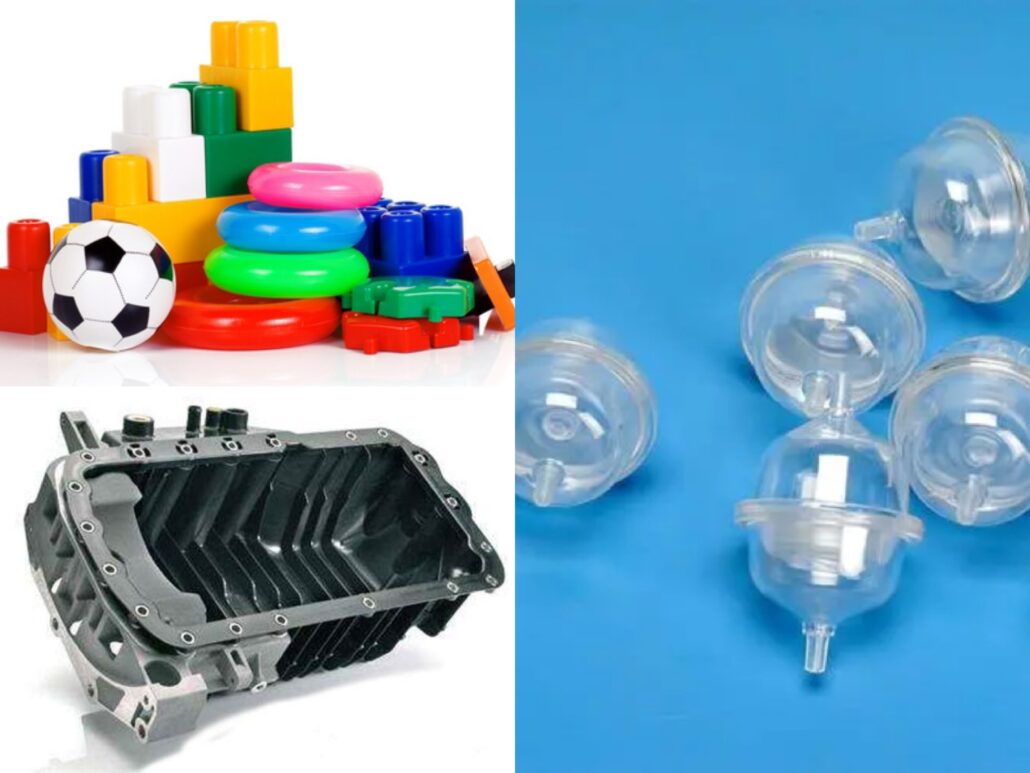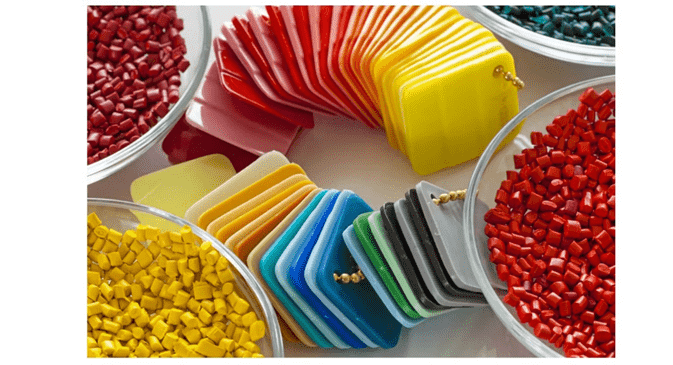In today’s materially abundant world, plastic products can be seen everywhere in our lives. From children’s toys to car parts, from mobile phone casings to aircraft dashboards, plastic products have become an indispensable part of people’s daily lives. The process of making plastics, injection molding, has become the first choice for manufacturers to produce plastic parts and components. This technology has many benefits, but it also has some drawbacks. Only by understanding injection molding and its advantages and disadvantages can we better help our choice of processing technology.
What is injection molding?
Definition of injection molding: Injection molding is refers to the method of stirring completely molten plastic material through a screw at a certain temperature, injecting it into the mold cavity with high pressure, and then cooling and solidifying to obtain a molded product. This method can be roughly divided into the following 4 stages: clamping, injection, cooling and ejection. By repeating the above process, products can be produced periodically in batches. Molding of thermoset plastics and rubbers involves the same process. This method has the advantages of fast production speed, high efficiency, and high adaptability, making it a widely used process in various industries.

Application of injection molding
Injection molded parts are mainly used in automobiles, home appliances, medical equipment, electronic equipment, toys and other fields.
| Automotive industry | Used to manufacture auto parts, such as bumpers, instrument panels, interior trim parts, etc. |
| Electronic and electrical industry | Produces various electrical casings, connectors, buttons, etc. For example, mobile phone cases, computer keyboards, etc. |
| Medical device industry | Can manufacture syringes, infusion sets, medical device shells, etc. |
| Toy industry | A large number of plastic toys are made by injection molding, such as dolls, building blocks, etc. |
| Daily necessities industry | Including plastic tableware, cups, toothbrush handles and other daily necessities. |
| Packaging industry | Such as bottle caps, plastic containers, etc. |

7 major advantages of injection molding
Many products we use in our daily lives are made using injection molding technology. But why do manufacturers prefer this injection molding technology to manufacture plastic products? The answer is that the technology offers several benefits:
Fast production speed and high efficiency
By first designing the mold according to the specifications given by the customer and pre-programming the injection molding machine, one mold can be used to repeatedly produce more products before the mold is replaced. A single mold can produce hundreds or thousands of parts, with many aluminum molds lasting up to 10,000 cycles and steel molds lasting over 100,000 cycles. This ensures a repeatable, high-output process that meets tolerance and aesthetic requirements. High productivity makes plastic injection molding efficient and cost-effective as well.
High flexibility in material and color selection
There are over 25,000 engineering materials available for the injection molding process. Materials such as antistatic plastics, thermoplastic rubbers, chemical-resistant plastics, and biocompostable materials that are available in color matching or masterbatch coloring. And it allows you to achieve the perfect balance between the mechanical, chemical and physical properties of materials such as material strength, durability, flexibility, etc.

High precision and beautiful appearance
Injection molding can reliably produce precision-molded plastic parts. Its precision is reflected in its ability to produce parts of consistent quality, tight tolerances, and high dimensional stability. Plastic injection molding is often the best choice for parts like gears and connectors because it can provide tolerances up to +/-0.0002”. It produces products of excellent quality, precision, and aesthetics.
High degree of automation
Injection molding is an automated process that enables multi-mold production and high production efficiency. In fact, most injection molding processes are performed using machines and robots. Reduces labor costs and makes operations safer.
Design Versatility
Injection molding ensures the production of parts with intricate geometric features. Manufacturers often optimize process parameters to achieve design versatility. Optimizing parameters such as injection pressure, temperature and speed will ensure that the plastic material is injected evenly into the mold cavity. In addition, machinists can use simulation software, automation, and 3D printing. These technologies help design and test molds, process parameters, and molded parts. However, the design versatility of injection molding depends on the plastic material, part complexity and mold design.

Schematic diagram of injection molding machine operation
Environmental protection
Due to the high material utilization rate of injection molding, compared with some other manufacturing processes, injection molding can control the amount of material used relatively accurately and reduce waste. And it is recyclable. Many plastic materials used for injection molding can be recycled and reused, which helps to reduce the demand for original materials and the generation of waste, and has advantages in environmental protection.
Save Cost
Injection molding is a cost-effective process that uses recyclable materials and produces less waste. Because plastic is cheaper than other materials such as metal and rubber, plus recycling the remaining plastic material into another production process is a cost-saving advantage. As a highly productive process, this method of manufacturing requires almost no labor costs once the initial mold equipment design, materials and production are set up, and thanks to automated production. As time and production volume increase, unit costs decrease. Therefore, it is an excellent choice for producing high-quality, high-volume plastic parts.
Disadvantages of injection molding
High initial investment
Each molded component requires a custom mold. The creation of these molds often adds to the initial cost of injection molding. This also reduces the economics of low-volume production runs. Tooling costs up to $5,000 for simple designs and small batches. In comparison, the cost of complex molds for mass production is much higher.
Lack of design flexibility
Once a mold is created, it is difficult or impossible to change it. Any major design changes will require a new mold, so it’s important to make sure the design that goes into the first mold is what you want.

Long initial lead times
It can take 5-7 weeks to build the tooling, and 2-4 weeks to make and ship the actual parts.
Not suitable for small batch production
Customized tools (including molds, fixtures, jigs and other equipment are expensive to manufacture. There are also costs associated with setting up the mold and purchasing the plastic to be molded. Anyone looking to start injection molding should make sure that the number of parts they want to produce makes sense from a financial perspective.
Why is Longsheng your first choice for injection molding services?
Longsheng has accumulated many years of experience in the field of injection molding, and has high-quality professional injection molding machine operators and designers, which can ensure the high quality of the products you need. More importantly, we have efficient production processes to ensure that you The product will be shipped to you within the required delivery time. Hope our service can satisfy you! Any questions please comment below or feel free to contact us.
Conclusion
In short, injection molding technology provides important support for product manufacturing in various industries with its advantages of fast molding speed, high production efficiency, and high product precision. With the continuous advancement and innovation of science and technology, it is believed that injection molding technology will be applied in more fields and bring new opportunities and challenges to the development of all walks of life. I am very happy to share this article with you, I hope it will be helpful to you!
FAQs
What is the principle of injection molding?
The principle of injection molding is that plastic materials are heated to a molten state and then injected into a mold cavity under high pressure. The molten plastic fills the cavity completely and takes the shape of the mold. After cooling and solidifying, the molded part is ejected from the mold, thereby achieving the purpose of mass-producing plastic products with specific shapes and structures.
What are the 5 key elements of injection molding?
Plastic material, mold, injection machine, process parameters and cooling system.
What is the process of injection molding?
Injection molding is a manufacturing process in which molten plastic is forced into a mold cavity under high pressure. The plastic is heated until it reaches a viscos state and then injected into the mold using an injection molding machine. The mold is designed to give the plastic the desired shape and features. Once the plastic has filled the mold, it is cooled and solidified, and the finished part is ejected from the mold. This process is widely used in the production of a variety of plastic products, such as toys, containers , and automotive parts, due to its ability to produce complex shapes with high precision and repeatability. It also allows for mass production of parts at a relatively low cost. However, it requires careful control of process parameters such as temperature, pressure, and injection speed to ensure the quality and performance of the final products.
What are the process parameters for injection molding?
Injection molding process parameters include the following: injection pressure, which determines the force of the molten plastic being injected; injection speed, influencing the rate at which the plastic fills the mold cavity; mold temperature, affecting the cooling and solidification of the plastic; melt temperature, crucial for the fluidity and quality of the plastic; holding pressure and time, ensuring proper packing and minimizing shrinkage; and cycle time, covering the overall time required for one molding cycle. These parameters need to be carefully controlled and optimized to achieve high-quality molded products.
Resource
Kansei Engineering Applied to the Form Design of Injection Molding Machines



Pingback: High-Speed Prototype Machining Services | Low-Volume Manufacturing for Prototypes
Pingback: Industrial Rapid Prototyping Services | 3D Printing vs. CNC Prototyping
Its fantastic as your other content : D, thanks for putting up.
Thank you for your support, each article is written by ourselves, we will update the article every day, you can subscription LS, wish you a happy day.